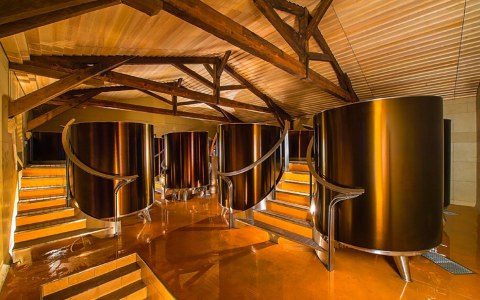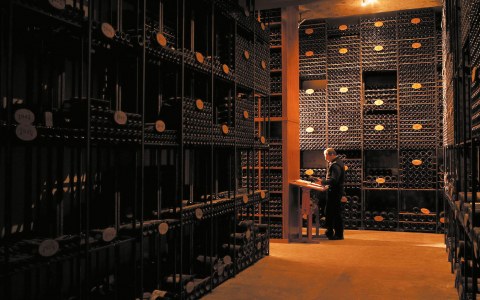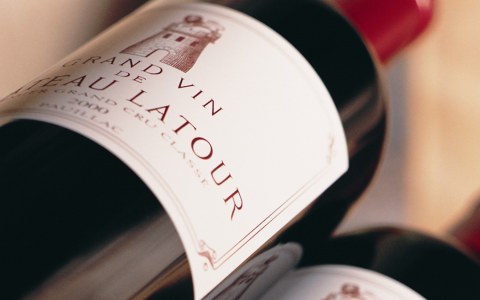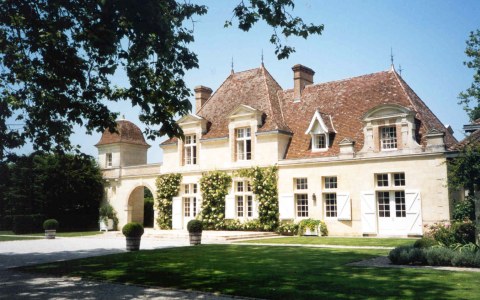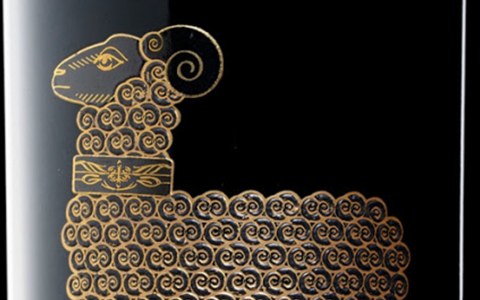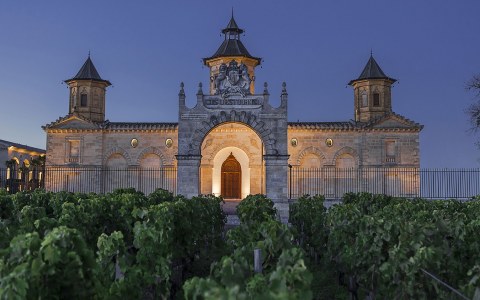The Roi family has been in the heart of Lussac Saint-Emilion since the 19th century. Jean-Noel Roi took over the estate in 1978. His sons, Antoine (assistant winemaker and estate manager) and Guillaume (marketing and sales) represent the 5th generation running the estate. In 2014, the family started working with the famous consultant Stephane Derenoncourt to make the best quality wines that reflect the complexity and subtlety of their terroir. Fully aware of the challenges of climate change and intent on protecting its ecosystem, the estate is committed to achieving level 3, the highest level of the High Environmental Value …
The estate has been occupied since at least the 12th century, with a fortified castle known as Lamothe. Wines under names like “Margou” were known in the 15th century, but it wasn’t the arrival of the Lestonnac family in the 16th century that wine production became of particular importance. In the 1570s, Pierre de Lestonnac expanded the property and cleared many of the grain fields to make way for vines. Classified as a 3rd Growth Grand Cru Classé in 1855. At the time of Napoleon III’s classification, Margaux was the only estate given a 20/20 rating. View current inventory: Collector Wines …
Throughout the centuries, Yquem has passed from the King of England to French nobility, down several generations as a most precious inheritance. Ranked the sole Premier Cru Supérieur wine from Sauternes in the Bordeaux Wine Official Classification of 1855. Yquem’s ability to craft renowned dessert wine stems largely from the site’s susceptibility to “noble rot.” The land is planted with 75% Semillon, which lends a structure and body to the final blend, and 25% Sauvignon Blanc, which contributes signature aromas for a more elegant finish. View current inventory: Collector Wines Visit the winery website: Château d’Yquem
Classified as a 2nd Growth Grand Cru Classé in 1855. Perched on an exceptional site with incomparable views of the Gironde estuary, in the center of a hundred-year-old park, Ducru-Beaucaillou is a majestic, Victorian-style castle that has become one of the great symbols of the Médoc. Unusual for Bordeaux, the château is built directly above the barrel cellars. View current inventory: Collector Wines Visit the winery website: Château Ducru-Beaucaillou
Classified as a 1st Growth Grand Cru Classé in 1855. Of the five first growths, it is the only wine from the Pessac-Léognan appellation. The prices of Haut-Brion in the 19th century were consistently higher than those of any other Bordeaux wine. This trend has continued into the present day, with the price of the estate’s grand vin averaging $571. Although grapes are thought to have been grown on the property since Roman times, the earliest document indicating the cultivation of a parcel of land dates from 1423. View current inventory: Collector Wines Visit the winery website: Château Haut-Brion
The Pichon Longueville estate dates back to 1688. In 1850, Virginie de Pichon Longueville, Countess de Lalande, and her two sisters inherited three-fifths of the vineyard from their father. Classified as a 2nd Growth Grand Cru Classé in 1855. The choice to use a higher percentage of Merlot than average is a partial explanation for this wine’s personality. Marked by elegance, balance, and finesse, the estate has an international reputation as a “Super Second” Growth. View current inventory: Collector Wines Visit the winery website: Château Pichon-Longueville-Comtesse-de-Lalande
The estate dates back to at least 1378, with vines existing on the property since the 14th century. A garrison fort was built 300 meters from the estuary to guard against attack during the Hundred Years’ War. The tower, La Tour, gave its name to the estate around the fortress and was in English hands until the Battle of Castillon in 1453. The original fortress no longer exists, but in the 1620s a circular tower (La Tour de Saint-Lambert) was built as a symbol of the estate’s heritage. Classified as a 1st Growth Grand Cru Classé in 1855. View current inventory: Collector …
Château Rauzan-Segla has a long and interesting history dating back to 1661. Classified as a 3rd Growth Grand Cru Classé in 1855. Currently owned by the Wertheimer family of Chanel, who immediately started a full renovation program in 1994 and installed a winemaking team led by David Orr and John Kolasa (both from Chateau Latour). View current inventory: Collector Wines Visit the winery website: Château Rauzan-Ségla
The Bordeaux Wine Official Classification of 1855 was based entirely on market prices with one exception: Château Mouton Rothschild. Despite the market prices equalling that of Château Lafite Rothschild, Mouton Rothschild was excluded from 1st Growth status. But in 1973, Mouton was elevated to 1st growth after decades of intense lobbying. Baron Philippe de Rothschild launched the idea of each year’s label being designed by a famous artist. This has become a significant aspect of the Mouton image with labels created by some of the world’s greatest artists. View current inventory: Collector Wines Visit the winery website: Château Mouton Rothschild
Classified as a 2nd Growth Grand Cru Classé in 1855. The name Cos refers to a “hill of pebbles” in Gascon dialect and the name Cos d’Estournel was given in 1810 by Louis-Gaspard d’Estournel, nicknamed the “Maharajah of Saint-Estèphe.” Cabernet Sauvignon accounts for two-thirds of this precious mosaic of numerous plots, with an average vine age of 55 years old. Cos wines tend to have a higher blend of Merlot than other classified Left Bank wines. View current inventory: Collector Wines Visit the winery website: Château Cos d’Estournel


